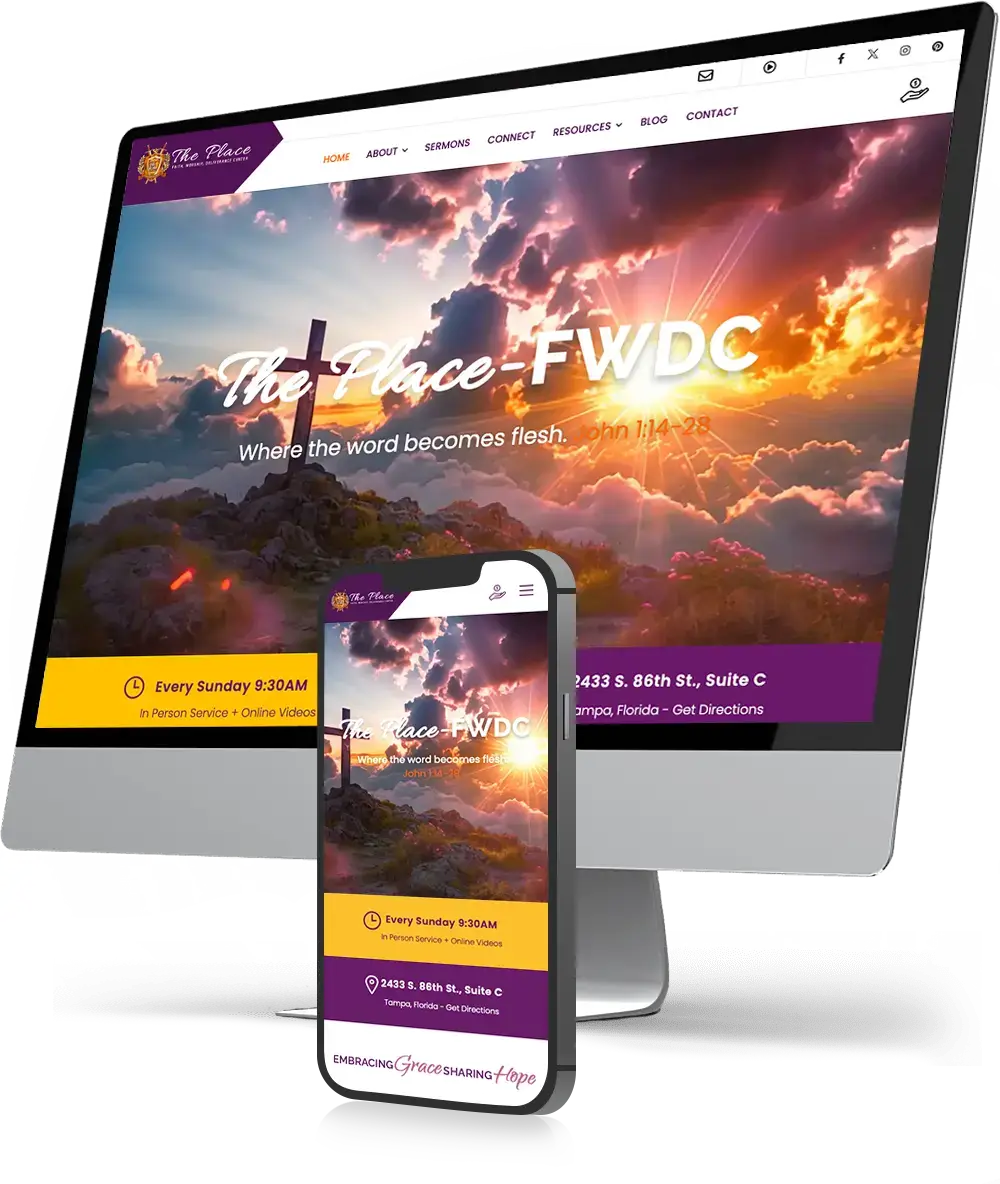How to Develop a Website For a Church

In today’s digital age, having a website is essential for any organization, including churches. A well-developed church website serves as a central hub where members and visitors can find information, engage with the church community, and learn more about the church’s mission. Here’s a step-by-step guide on how to develop a website for a church.
Best way to design and develop a website for church
Envisager Studio is team of expert web developers and designers with a heart for ministry. When we design a website for your church, we make sure it represents your organization well. We envision your dream and make it a tangible reality.
Continue reading to learn more about our church website design process along with a featured site.
01. The website purpose and goals
Before starting the technical process of development, it’s important to define the goals of the church’s website. Some typical purposes include:
- Providing information about church services, events, and ministries.
- Sharing the church’s mission, values, and statement of faith.
- Allowing online donations or tithing.
- Offering a platform for live streaming or recorded sermons.
- Engaging with church members and visitors through blogs or newsletters.
Once the goals are clear, we create your brand style guide to ensure it’s inline with your organization’s purpose and goals. After everyone is agreeable, the development process will be easier, as these goals and brand guide will dictate both the content and design of the website.
02. Domain selection and hosting service
Your domain name should reflect your church’s name and mission, making it easy to remember. For example, if your church is called “Grace Baptist Church,” an ideal domain might be gracebaptistchurch[dot]org.
For hosting, it’s crucial to choose a reliable hosting provider that can handle the traffic and provide good support. We help guide our clients in choosing the ideal hosting provider that checks all the important boxes. There’s nothing worse than having your website crammed on a server with hundreds of thousands of other websites.
03. Choose the right platform
At Envisager Studio, we specialize in custom design websites for churches using the ever popular WordPress content management system. After the initial collaboration and planning with your organization’s decision maker, we begin the website development process.
04. Clean, friendly design
Design plays a significant role in how people interact with your website. For this reason, we make sure the design and development of your website for your church contain the following components, unless they are not applicable to your organization:
- A clean and modern design
- Responsive design
- Include features like event calendars, sermon libraries, donation buttons, and social media integration
- Optimized for fast loading
- SEO optimized pages and content
- And more
05. Essential pages
Certain pages are vital for church websites. At minimum, we include the following:
- Home Page: A welcoming homepage with service times, location, and a clear call to action.
- About Us: Information about the church’s mission, leadership, and history.
- Events: A calendar of upcoming events, services, and ministry activities.
- Sermons: Video sermons, audio, or live streaming sermons page.
- Ministries: Pages dedicated to different ministries, such as youth, women, or community outreach.
- Contact: The contact details page, including an address, phone number, email, and a contact form.
- Donate: If your church accepts donations online, create a secure and easy-to-use donation page.
06. Test and launch the website
When we design and develop websites for churches, there’s a point when the remaining tasks on your wishlist are ‘nice to haves’. After you decide that point, we thoroughly test your website to ensure everything works as expected. And then the website is ready to launch after we have built enough of the highest priority tasks from your wishlist.
Because we built websites for future expansion, you will have a pathway to continue improving your website years after launch.
7. Ongoing maintenance and updates
After launching the website, maintaining it is essential to keep it running smoothly. We provide website maintenance packages to regularly update content, such as sermon recordings, event calendars, blog posts, and backend core components.
Additionally, you can track your website’s performance using tools like Google Analytics to see how visitors are engaging with your content. This data can help you make informed decisions about future updates and improvements.
Conclusion
Developing a website for a church may seem overwhelming at first, but by following these steps, you can create a functional, attractive, and engaging online presence for your church. A well-designed website will not only serve current members but also provide a welcoming gateway for visitors and newcomers to learn more about your church community.
By focusing on user-friendly design, clear messaging, and valuable content, your church’s website can become an essential tool for ministry and outreach.
You may also enjoy reading: How To Use Email Marketing To Promote Your Website

Hazel Burgess
FOUNDER/SEO DIRECTOR
Hazel is the Founder & SEO Director at Envisager Studio, a premier website design agency specializing in WordPress website design, development and internet marketing. In her spare time, she writes about search engine optimization, website design, and internet marketing.





